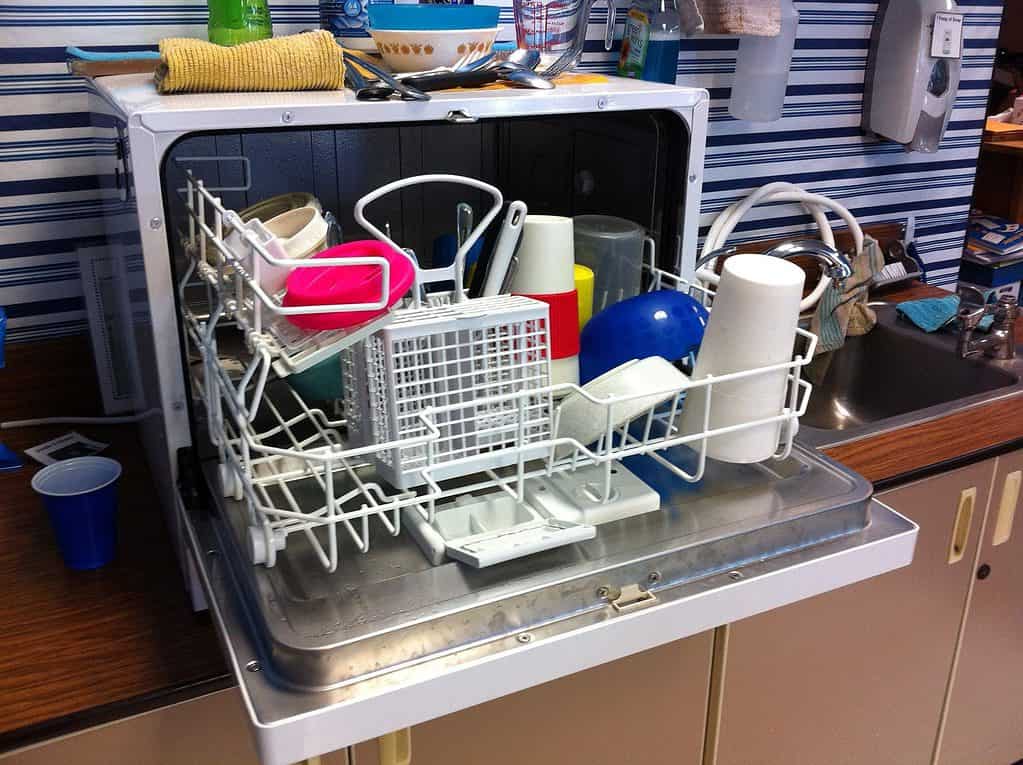
When the washing machine first came out, doing laundry was no never the same. You really can’t go back to handwashing after you’ve used a washing machine. Likewise, the dishwasher came as a godsend, especially for restaurants, schools, and any other place that needs to serve food to lots of people. However, there may be hidden risks to these highly useful appliances, a new study finds.
Maybe not so squeaky clean after all
According to a new study, although it may look like dishwashers leave plates and glasses squeaky clean, some models may deposit rinse aid agents, which dry up and leave a thin residue layer on the cleaned plates and cutlery. These are potentially toxic substances that can easily end up in the gastrointestinal tract the next time you use dishwasher-cleaned plates for a meal.
Dishwashers typically work using a combination of hot water, detergent, and mechanical action to remove dirt and grime from the surfaces of the dishes and utensils. Once the desired wash cycle is selected and the machine is started, the appliance will fill with water, which is quickly heated to a high temperature to help loosen and dissolve any food particles and grease stuck on the dirty dishes. The water and detergent are distributed over the dishes and utensils through a series of spray arms under high pressure.
Once the wash cycle is complete, the dishwasher will empty the used water and start the rinse cycle, again using its spray arms to distribute fresh, clean water over the dishes. Finally, after this stage is complete, there’s a drying cycle, in which hot air is circulated inside the appliance to help evaporate any remaining water on the dishes and utensils. However, during the rinse cycle, some dishwashers add a rinsing agent to the water.
“What’s especially alarming is that in many appliances, there’s no additional wash cycle to remove the remaining rinse aid,” says Cezmi Akdis, University of Zurich professor of experimental allergology and immunology, who led the study. “This means that potentially toxic substances remain on the dishes, where they then dry in place.”
Akdis and colleagues wanted to figure out what happens when these rinse agents reach our guts so they used a newly developed technology specially designed for this study, namely human intestinal organoids and intestinal cells on microchips. The resulting 3-D clump of cells is very similar to the tissue in the epithelial barrier that lines the inside of our guts. This vital protective layer lines the intestinal tract and controls what enters the body. Previously, damage to the epithelial barrier has been associated with food allergies, gastritis, diabetes, obesity, cirrhosis of the liver, rheumatoid arthritis, multiple sclerosis, autism spectrum disorders, chronic depression, and even Alzheimer’s disease.
“We assume that defective epithelial barriers play a role in triggering the onset of two billion chronic illnesses,” says Akdis.
The epithelial-like cells were exposed to diluted concentrations of various commercial detergents and rinse aids to mimic as closely possible the number of substances left over on dry dishes. According to the results, high doses of rinse agents (1:10,000 dilution) destroyed the intestinal epithelial cells, while lower doses (1:40,000) made the cells more permeable. Compared to cells that weren’t exposed to rinsing agents, dishwasher activity — particularly exposure to alcohol ethoxylates — activated several genes and cell signaling proteins that are involved in triggering inflammation.
About 68% of American households have a dishwasher in the kitchen and about half of those households use their dishwashers between one and six times per week, with larger households reporting more frequent use. Seeing how so many people use dishwashers, Akdis thinks his findings have clear and worrisome implications for public health.
“The effect that we found could mark the beginning of the destruction of the gut’s epithelial layer and trigger the onset of many chronic diseases,” he says.
The findings appeared in the Journal of Allergy and Clinical Immunology.









